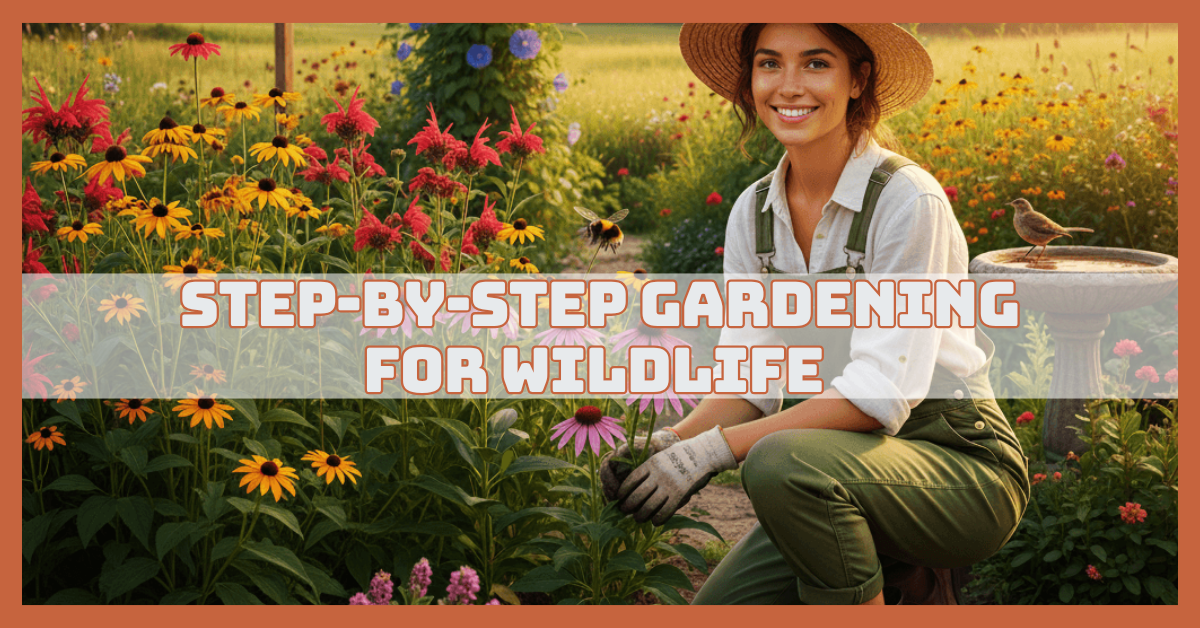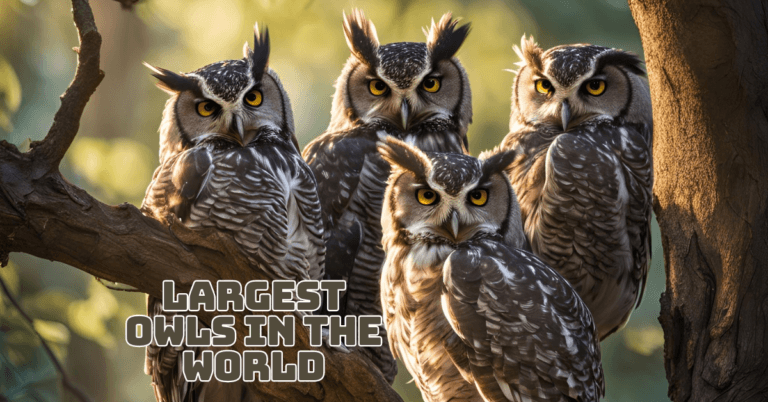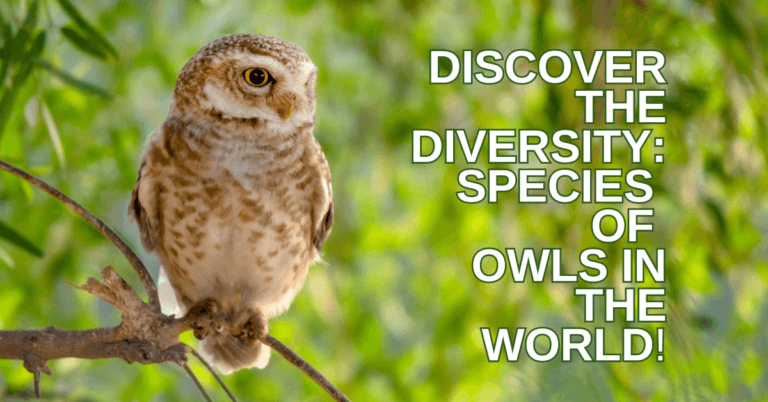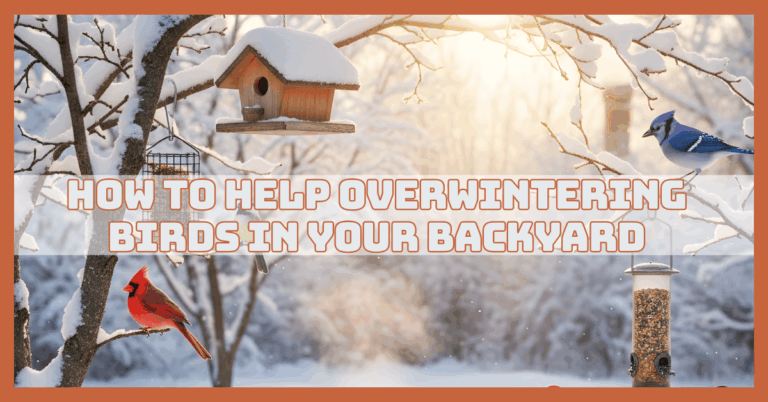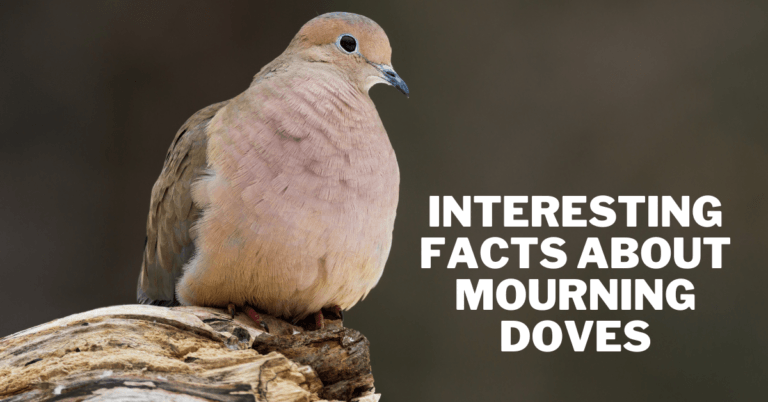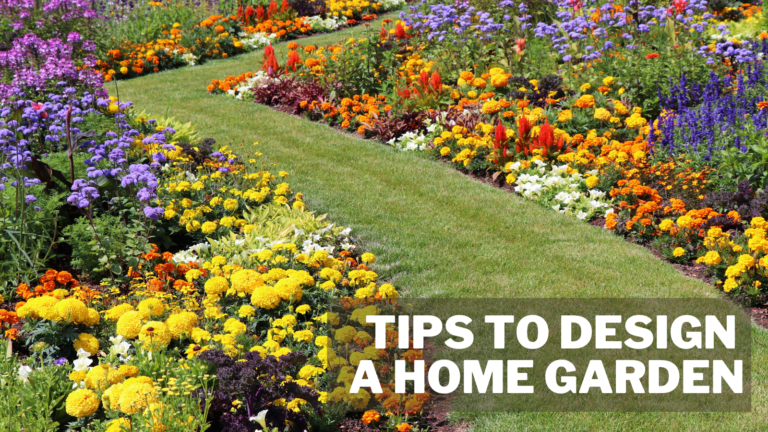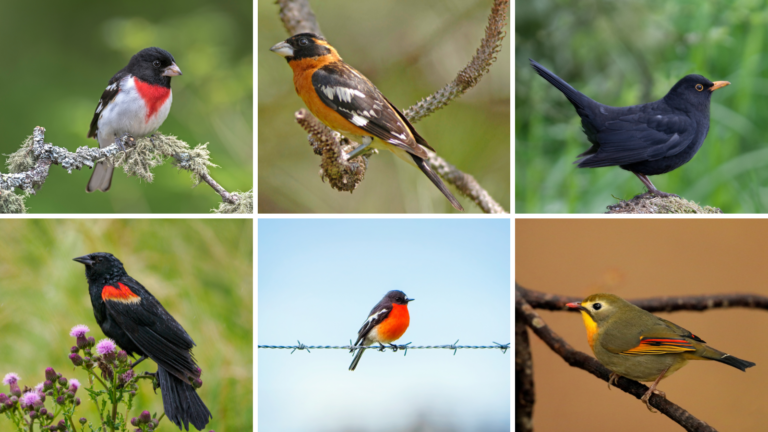Step-by-Step Gardening for Wildlife – Support Nature At Home
Creating a garden that supports wildlife is one of the most rewarding ways to connect with nature. By choosing native plants, providing food, water, and shelter, you can transform your backyard into a thriving habitat for birds, bees, and butterflies.
This comprehensive guide will not only enhance your outside space but also teach you how to design a beautiful, eco-friendly garden that will protect and care for local species in your own house.
Why Gardening For Wildlife Matters
As green spaces disappear, birds, bees, and other wildlife struggle to find the essentials they need to survive. The simple act of gardening for wildlife can help reverse this loss—turning your yard into a haven for nature.
1. Restores Balance To Nature
Wildlife gardens bring back natural harmony by recreating habitats lost to urbanization. They provide food, shelter, and nesting areas for displaced species, allowing ecosystems to recover. Even small green spaces can make a significant impact on biodiversity.
2. Supports Pollinators
Pollinators like bees and butterflies rely on nectar-rich native plants to survive. By planting these species, you help ensure healthy pollination for fruits, vegetables, and flowers, supporting both local food chains and global ecosystems vital to human and animal life.
3. Provides Food And Water Sources
Birds, insects, and small mammals need reliable food and water to thrive. Adding berry bushes, flowering plants, and shallow birdbaths transforms your garden into a life-sustaining hub, offering nourishment and hydration throughout every season.
4. Encourages Natural Pest Control
Welcoming beneficial insects such as ladybugs and spiders keeps harmful pests in check. Frogs and birds also help maintain ecological balance.
This natural pest control method reduces dependency on chemical sprays, promoting healthier plants and safer outdoor environments.
5. Enhances Biodiversity And Well-Being
A wildlife garden attracts diverse species, creating a balanced ecosystem complete with life and colour. Beyond its ecological benefits, it enhances mental well-being, reduces stress, and offers a peaceful retreat that reconnects you with the rhythms of nature.
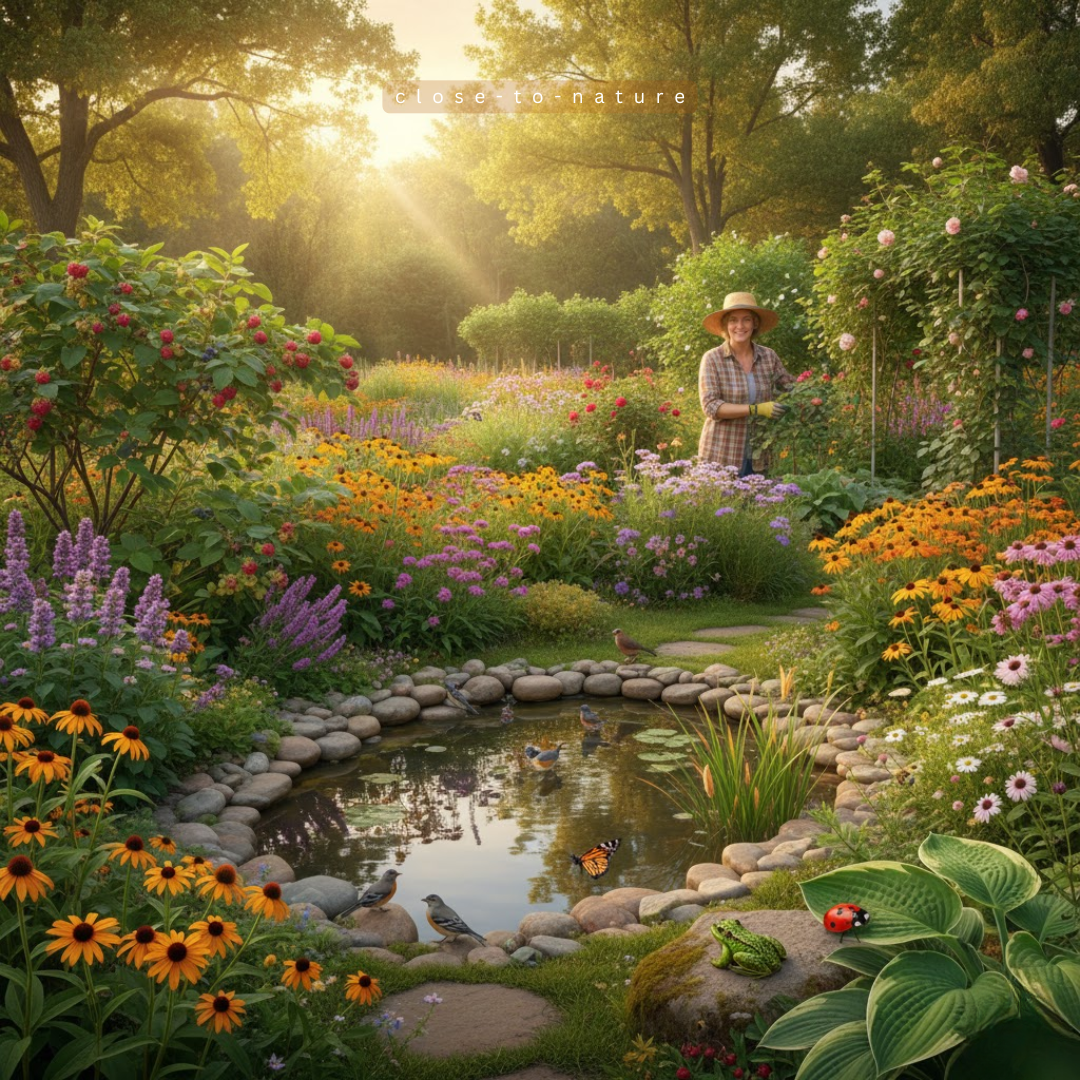
Step-by-Step Gardening For Wildlife
Step 1: Start With A Plan
Before you plant anything, take time to observe your space carefully. Notice where sunlight hits during the day and how water drains after rain. Look at existing plants and natural features—they tell you what works.
Ask yourself who you want to attract: birds, butterflies, bees, or all of them. Consider your local climate and soil type to choose suitable plants.
Think about the space and time you can dedicate. Sketch a simple layout marking plant spots, water features, or shelters. Planning ensures your garden grows naturally, thrives sustainably, and supports wildlife successfully.
Key Tips
- Track sunlight patterns daily.
- Note areas with poor drainage.
- Identify existing plants and trees.
- Plan space for water features.
Step 2: Choose Native Plants
For a garden to be wildlife-friendly, native plants are necessary. They’ve evolved in your region, providing the exact food and shelter local species need. Choosing the right plants ensures birds, bees, and butterflies thrive naturally.
Avoid hybrids that lack nectar or pollen. Mix flowers, shrubs, and small trees for year-round interest. Include plants that bloom at different times to keep food available throughout the seasons.
Native plants are also low-maintenance, resilient, and better adapted to local weather and soil. By planting them, you create a sustainable, thriving garden that supports wildlife while looking beautiful.
Key Tips
- Select plants native to your region.
- Include flowers, shrubs, and trees.
- Avoid hybrid plants lacking nectar.
- Choose plants that bloom at different times.
Step 3: Layer Your Garden Like Nature
A wildlife-friendly garden thrives when it mimics natural layers. Think vertically and horizontally. Start with trees for shade, shelter, and nesting. Add shrubs for berries and hiding spots. Include flowers and herbs for nectar and pollen.
Finish with ground cover and mulch to protect soil and provide insect shelter. Each layer supports different species—birds perch in trees, bees forage among flowers, and insects hide under leaves.
Layering also improves soil health, prevents erosion, and creates a visually rich garden. A diverse structure ensures your garden attracts and sustains more wildlife naturally.
Key Tips
- Plant trees for shade and shelter.
- Add shrubs for berries and cover.
- Include flowers for nectar and pollen.
- Use ground cover to protect the soil.
Step 4: Add A Water Source
Water is vital for all wildlife. Providing water features like birdbaths and ponds is a simple yet essential step in gardening for wildlife, ensuring birds, insects, and other creatures thrive.
Add pebbles for perching insects and change water regularly to keep it clean. A small pond or rain garden can draw frogs, dragonflies, and beneficial insects—place water sources in partial shade to stay cool and reduce algae.
Providing reliable water ensures wildlife stays hydrated, healthy, and visits your garden often. Your outdoor area becomes a vibrant ecosystem that naturally supports numerous species with this easy installation.
Key Tips
- Use shallow bowls for easy drinking.
- Add pebbles for insects to perch.
- Change water regularly for freshness.
- Place water in shaded areas.
Step 5: Offer Food And Shelter
Wildlife needs both food and safe shelter to thrive. You can provide this easily in your garden: plant berry-producing shrubs, nectar-rich flowers, and herbs to feed birds, bees, and butterflies.
Add bird feeders with seeds or suet for extra nourishment. For shelter, consider nesting boxes, log piles, or leaf piles for insects, frogs, and small mammals. Even messy corners help—fallen leaves and branches create homes for many creatures.
By offering food and shelter, you ensure wildlife stays, breeds, and thrives. Your garden becomes a safe, nourishing, and vibrant ecosystem for all visitors.
Key Tips
- Plant berry-producing shrubs for birds.
- Grow nectar flowers for pollinators.
- Add nesting boxes and log piles.
- Leave leaf litter for insect homes.
Step 6: Avoid Chemicals
Pesticides, herbicides, and synthetic fertilizers can harm the very wildlife you want to attract. Even small amounts can kill bees, butterflies, and beneficial insects.
Instead, use organic or natural alternatives to manage pests and promote healthy plant growth. Encourage ladybugs, spiders, and birds to control insects naturally.
Handpick weeds or use vinegar sprays to manage unwanted plants. Adding compost improves soil fertility without chemicals.
By avoiding toxic substances, your garden becomes safer for all creatures, encourages natural balance, and supports a thriving, sustainable ecosystem where wildlife can live, feed, and reproduce safely.
Key Tips
- Skip chemical pesticides and herbicides.
- Use natural pest control methods.
- Encourage beneficial insects for balance.
- Add compost to enrich the soil naturally.

Step 7: Create Pollinator Zones
Pollinators like bees, butterflies, and moths are vital for a healthy garden. Plant clusters of nectar-rich flowers to make it easy for them to find food. Include a variety of shapes, colours and sizes to attract different species.
Leave some bare soil or sandy patches for ground-nesting bees. Avoid double-petaled flowers, as they often lack nectar. Grouping plants so pollinators travel efficiently, supporting both your garden and the broader ecosystem.
With pollinator zones, you ensure continuous food sources, increase fruit and vegetable yields, and create a vibrant, buzzing garden full of life.
Key Tips
- Plant flower clusters for easy access.
- Include diverse flower shapes and colours.
- Leave bare soil for nesting bees.
- Avoid double-petaled flowers with no nectar.
Step 8: Embrace Native Trees And Shrubs
The foundation of a wildlife-friendly garden is made up of native trees and shrubs. They provide shelter, nesting spots, and food for birds, insects, and small mammals.
Trees like oak or dogwood support caterpillars and pollinators, while berry-producing shrubs feed birds in winter. Planting both deciduous and evergreen varieties ensures habitat and food year-round.
Native plants are hardy and low-maintenance due to their adaptation to the local environment and soils. Even planting a single tree can support hundreds of species, creating a mini-ecosystem. By embracing native vegetation, your garden becomes a reliable sanctuary that nurtures wildlife naturally.
Key Tips
- Plant native trees for shelter.
- Include berry-producing shrubs for food.
- Use evergreen and deciduous varieties.
- Choose plants suited to local soil.
Step 9: Let Nature Take Its Course
Letting nature take its course is a key principle in gardening for wildlife, creating habitats and supporting biodiversity naturally. Avoid over-tidying—fallen leaves, branches, and natural debris provide shelter for insects, frogs, and small mammals.
Logs, leaf piles, and untamed corners become safe homes and breeding grounds. Allow some plants to self-seed and flowers to go to seed, creating continuous food sources.
By stepping back, you encourage natural cycles and ecological balance. Imperfections in the garden aren’t flaws—they’re essential habitats.
Letting nature lead helps your garden sustain itself while supporting biodiversity. Over time, your outdoor space transforms into a thriving, living ecosystem complete with life.
Key Tips
- Leave fallen leaves and debris.
- Allow logs and branches to remain.
- Let some plants self-seed naturally.
- Accept imperfections as wildlife habitats.
Turn Your Passion for Nature Into Income
🌿 Whether you love gardening, caring for animals, or exploring holistic living,
You can share your knowledge online and earn from it.
Discover how nature lovers are growing their passions into meaningful, income-generating blogs. 👇
Step 10: Add Habitat Features
Small habitat features make a big difference for wildlife. Bug hotels, made from bamboo, pinecones, and twigs, provide shelter for insects. Bat boxes offer safe roosting spots, while rock piles give lizards and small mammals hiding places.
Compost heaps attract worms and beetles, enriching soil and feeding birds. Even simple features like a log or hollowed-out tree branch create essential homes. Each addition supports a different species, enhancing biodiversity.
By thoughtfully incorporating these elements, your garden becomes a complete ecosystem, offering food, shelter, and safety. Wildlife will thrive, and you’ll enjoy observing their fascinating behaviour closely.
Key Tips
- Build bug hotels for insects.
- Install bat boxes for roosting.
- Create rock piles for shelter.
- Maintain compost heaps for soil.
Step 11: Use Sustainable Gardening Practices
Sustainable practices make your wildlife garden eco-friendly and low-maintenance. Collect rainwater in barrels to reduce reliance on taps.
Use mulch to boost soil health and keep moisture; compost kitchen wastes to naturally enrich the soil and cut down on waste. Choose drought-tolerant or native plants that thrive with minimal care.
These methods conserve water, lower your environmental footprint, and support a resilient ecosystem. Sustainable gardening not only benefits wildlife but also saves time and resources for you.
Over time, your garden becomes self-sustaining, healthy, and abundant, providing a haven for birds, pollinators, and small animals.
Key Tips
- Collect rainwater for watering.
- Use mulch to retain moisture.
- Compost kitchen scraps for soil.
- Plant drought-tolerant native species.
Step 12: Attract Birds Year-Round
Birds are some of the most visible visitors in a wildlife garden. Providing diverse food, water, and shelter is an essential strategy in gardening for wildlife to attract and support birds year-round.
Plant berry-producing shrubs that ripen in winter for a natural food source. Leave seed heads standing after flowers fade to feed birds during colder months. Install nesting boxes in spring and provide sheltered areas for protection in fall.
A mix of food, water, and shelter ensures birds return consistently. Year-round planning helps maintain biodiversity and creates a lively, dynamic garden full of colour and song.
Key Tips
- Offer diverse feeders for all birds.
- Grow shrubs producing winter berries.
- Leave seed heads for natural food.
- Provide nesting boxes and shelters.
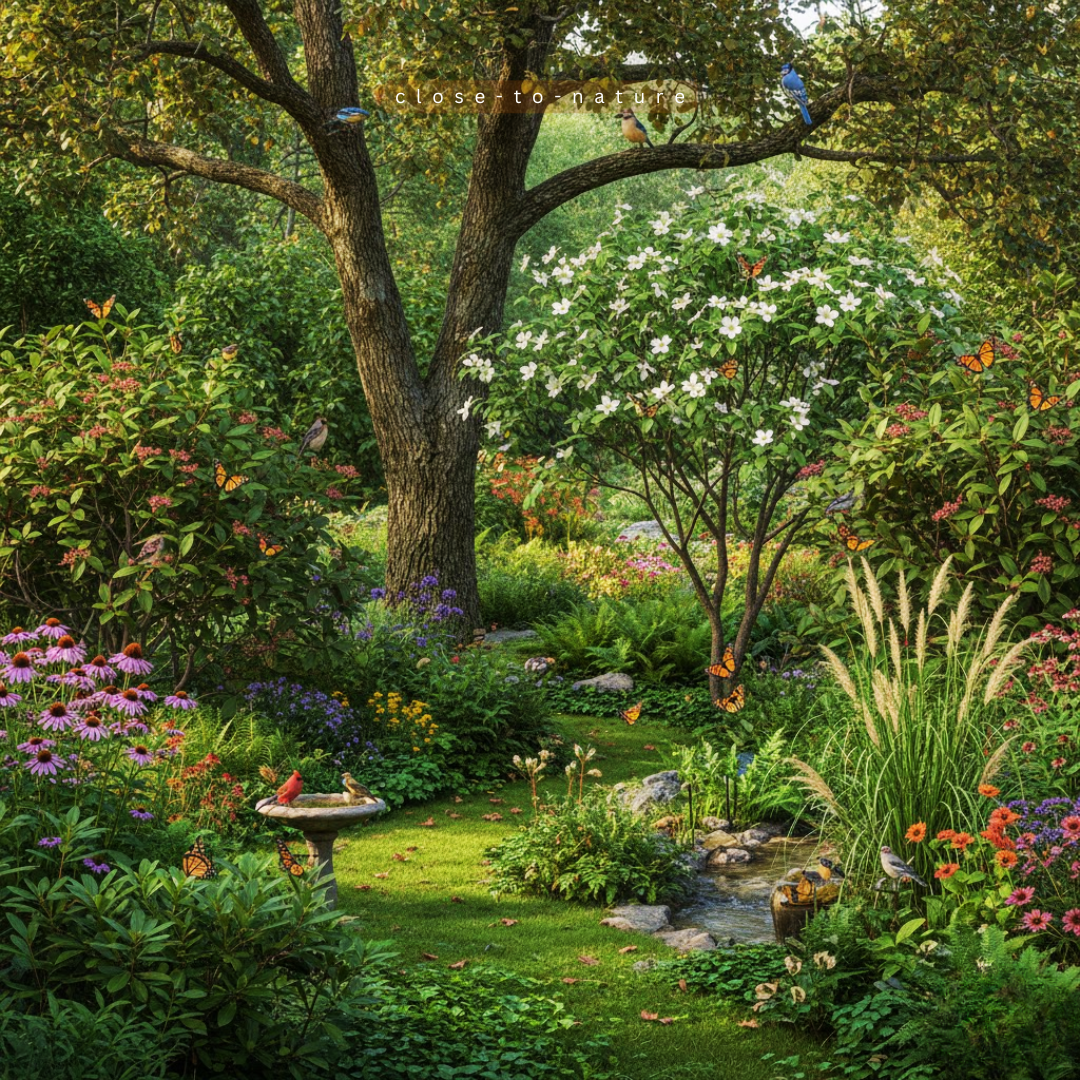
Step 13: Make It Butterfly-Friendly
Butterflies add colour and life to your garden while supporting pollination—plant host plants like milkweed, dill, or fennel for caterpillars to feed and grow.
Include nectar-rich flowers such as zinnias, lantanas, and coneflowers to attract adult butterflies. Provide sunny spots with flat stones where they can bask and rest.
Avoid pesticides or chemical sprays that can harm larvae and delicate wings. Grouping flowers helps butterflies find food more easily and encourages more extended visits.
By creating a butterfly-friendly environment, you support their life cycle while adding beauty and movement to your garden.
Key Tips
- Plant host plants for caterpillars.
- Include nectar flowers for adults.
- Create sunny basking spots with stones.
- Avoid pesticides that harm butterflies.
Step 14: Welcome Amphibians And Reptiles
Frogs, toads, and lizards play a vital role in controlling pests naturally. They thrive in cool, damp, and sheltered areas. Create small ponds, shallow water features, or damp rock piles to attract them.
Leave logs, leaf litter, and ground cover undisturbed for hiding and breeding. Avoid using chemical pesticides or slug pellets that can harm these species.
By providing safe habitats, you encourage amphibians and reptiles to take up residence, helping maintain a balanced ecosystem.
These creatures indicate a healthy garden and contribute to natural pest control, making your space more vibrant and self-sustaining.
Key Tips
- Add small ponds for amphibians.
- Keep logs and leaf litter.
- Provide damp rock piles for shelter.
- Avoid chemicals and harmful sprays.
Step 15: Keep It Blooming All Year
Planting seasonal blooms is a key technique in gardening for wildlife, ensuring continuous food and habitat for birds, pollinators, and beneficial insects year-round.
In spring, grow daffodils, primroses, and wild violets to feed early pollinators. Summer brings lavender, coneflowers, and bee balm for bees and butterflies.
Autumn asters and goldenrod provide late-season nectar, while winter holly and ivy offer berries and shelter. Planting a variety of species ensures there’s always food and habitat available.
This year-round bloom cycle keeps pollinators, birds, and beneficial insects thriving. By planning for continuous flowering, your garden remains lively, colourful and full of wildlife all year long.
Key Tips
- Plant spring-blooming nectar flowers.
- Include summer flowers for pollinators.
- Grow autumn flowers for late nectar.
- Add winter shrubs for berries.
Step 16: Add Personal Touches
A wildlife garden is also your personal sanctuary. Add benches, winding paths, or decorative features to create a peaceful retreat. Minor signs like “Wildlife Welcome” can make it fun and educational.
Incorporate wind chimes, birdhouses, or artistic elements that reflect your style. Personal touches don’t just enhance beauty—they encourage you to spend time observing and enjoying wildlife.
Watching bees pollinate, birds feed, or butterflies flutter brings calm and connection to nature. Your garden becomes both a thriving ecosystem and a relaxing haven where you can unwind, recharge, and appreciate the vibrant life you’ve nurtured.
Key Tips
- Add benches for relaxation and observation.
- Include winding paths for easy access.
- Install birdhouses and decorative elements.
- Use minor signs to educate visitors.
Step 17: Educate And Share
Once your wildlife garden is thriving, share your knowledge and experience. Invite neighbours, friends, or local schools to visit and learn about native plants, pollinators, and habitat creation.
Teaching others inspires more wildlife-friendly gardens in your community. Share tips on composting, planting, and sustainable practices through social media or workshops.
Children especially benefit from hands-on experiences, fostering respect for nature from a young age. By spreading awareness, you help create connected habitats across neighbourhoods, boosting biodiversity.
Education multiplies your garden’s impact, turning your backyard into both a sanctuary for wildlife and a learning hub for people.
Key Tips
- Invite neighbours' friends to visit.
- Teach children about wildlife gardening.
- Share tips on social media platforms.
- Host workshops or small community events.
Step 18: Keep Observing And Adapting
Gardens are ever-changing, and wildlife needs may shift over time. Regular observation and adaptation are essential in gardening for wildlife to ensure your garden continues meeting the needs of birds, pollinators, and other species.
Keep a simple journal of wildlife sightings, flowering times, and seasonal changes. Adjust plant choices, water sources, or habitat features as required.
Some species may prefer certain spots, while others may move on. By monitoring and adapting, you ensure your garden continues to meet the needs of birds, pollinators, and small animals.
This ongoing attention helps maintain a balanced, resilient ecosystem that evolves naturally with the seasons and wildlife patterns.
Key Tips
- Observe wildlife activity regularly.
- Note seasonal changes in plants.
- Adjust garden features as needed.
- Keep a journal of observations.

Conclusion
Creating a wildlife-friendly garden transforms any space into a thriving, living ecosystem. Thoughtful planning and care are key in gardening for wildlife, transforming your backyard into a thriving sanctuary that supports birds, pollinators, and other creatures.
Even small gardens make a significant impact on local biodiversity. With thoughtful planning and care, your backyard becomes a sanctuary where wildlife flourishes and you reconnect with the rhythms of the natural world.
I trust you enjoyed this article on [Blog Topic]. Please stay tuned for more inspiring guides, helpful tips, and ideas to help you live closer to nature every day.
Take care!
— JeannetteZ
💬 Your Opinion Is Important To Me
Do you have thoughts, ideas, or questions? I’d love to hear from you. Please leave your comments below or email me directly at Jeannette@Close-To-Nature.org.
📚 More Nature-Inspired Reads
Explore more ways to connect with nature, nurture your pets, and live in harmony with the world around you 🌿

